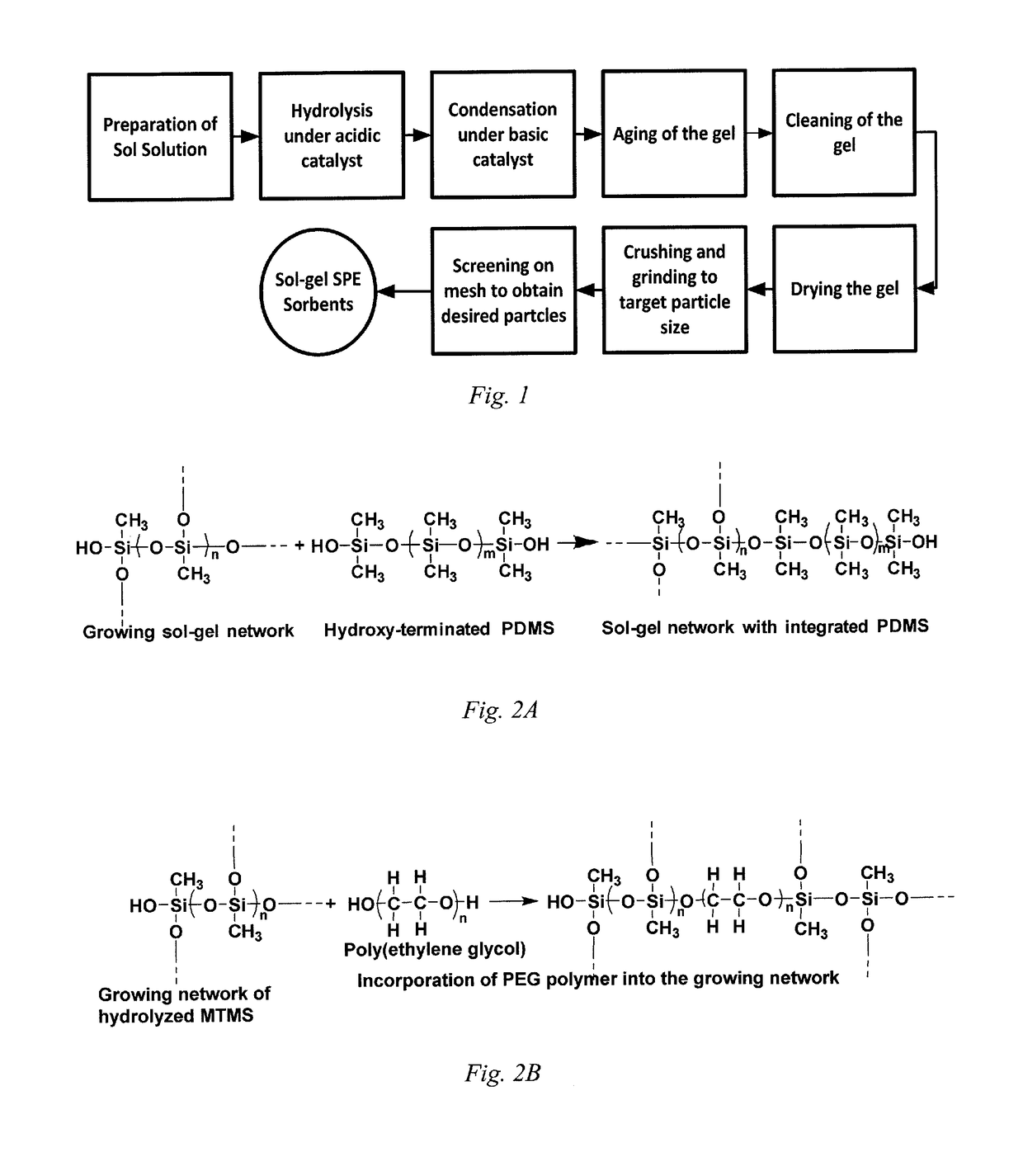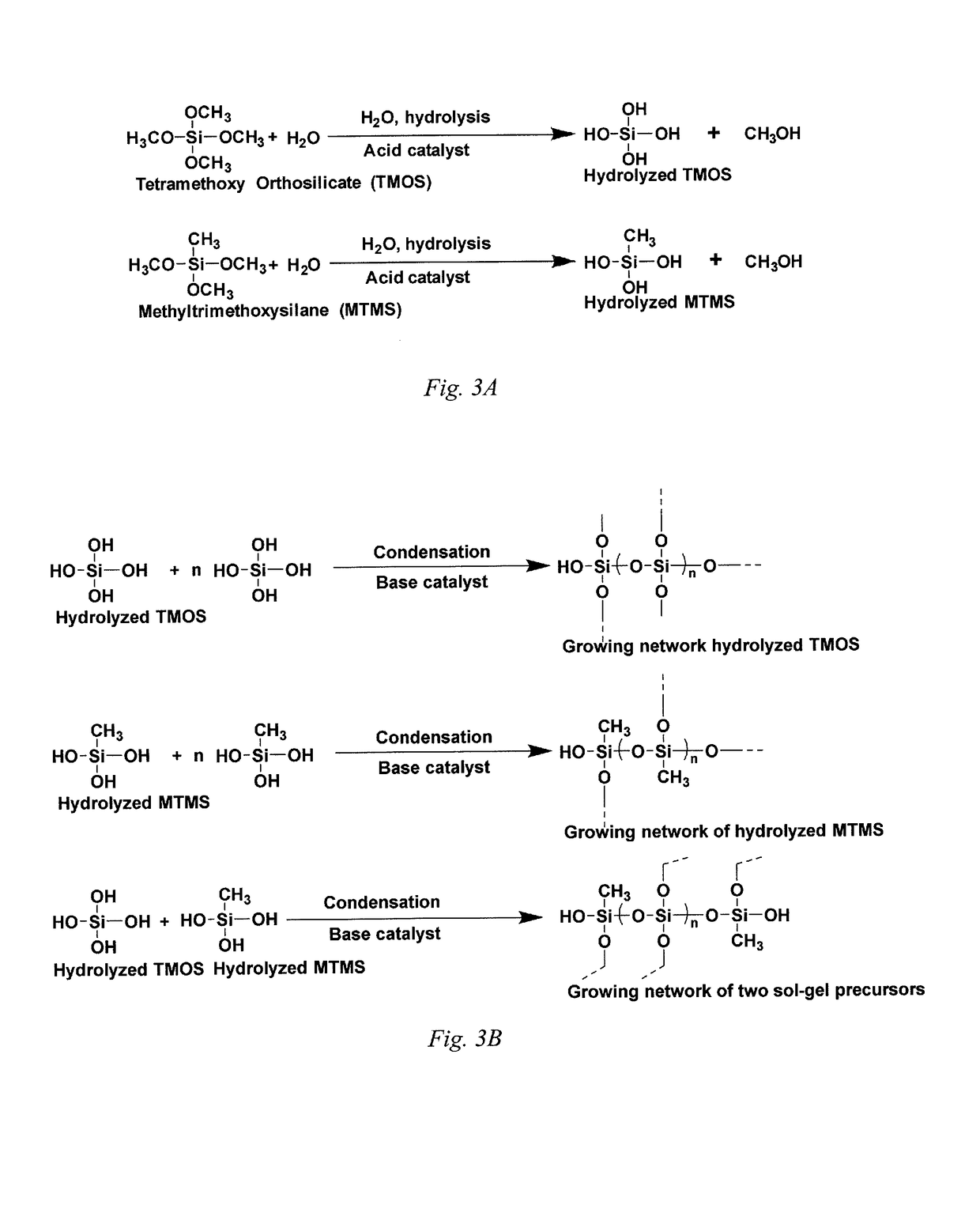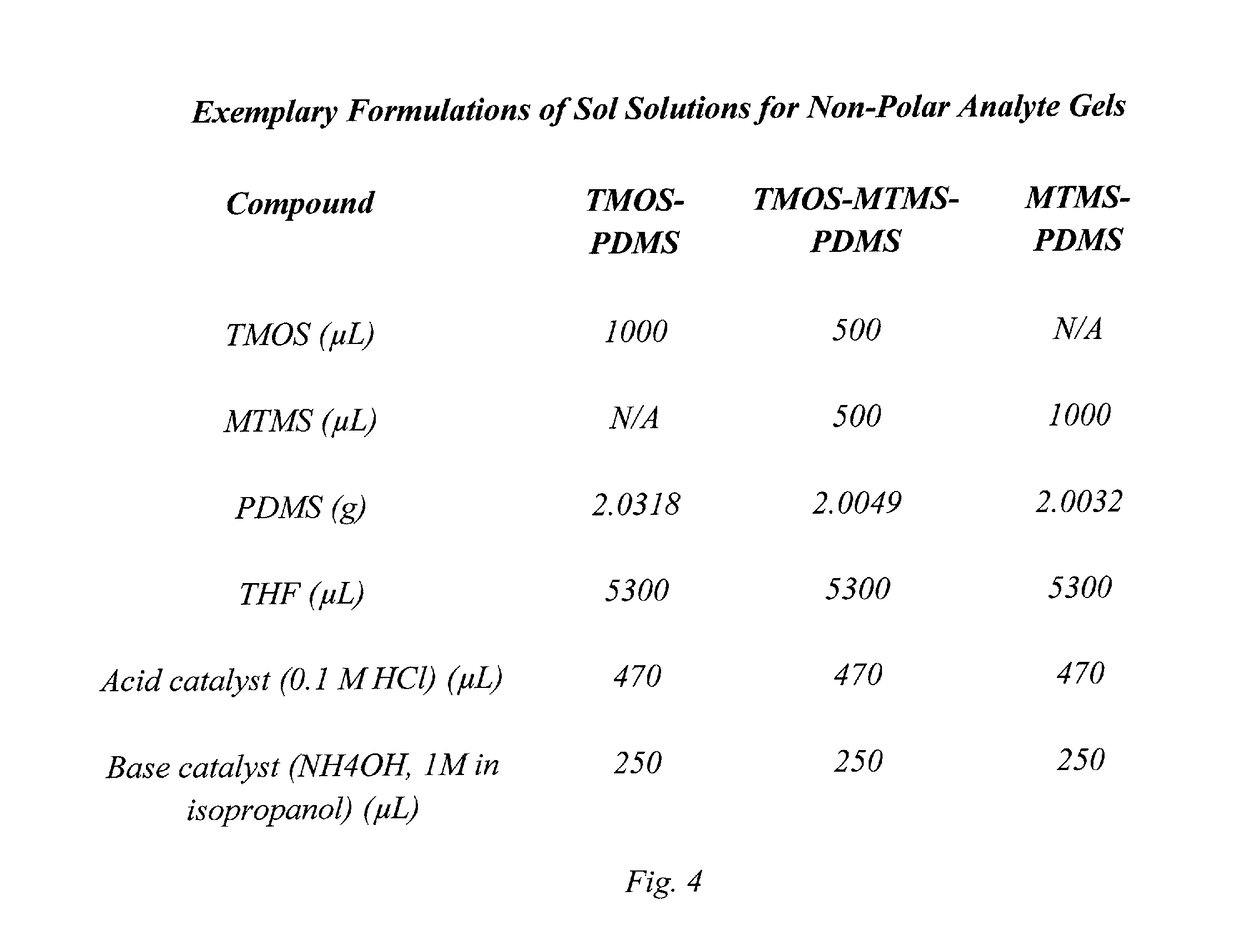Sol-gel polymeric stationary phases for high-performance liquid chromatography and solid phase extraction: their method of making
a technology of liquid chromatography and solid phase extraction, which is applied in the direction of silicon compounds, other chemical processes, separation processes, etc., can solve the problems of chemical instability, substantial limit the power of high-performance liquid chromatography, and continuous shift in chromatographic retention
- Summary
- Abstract
- Description
- Claims
- Application Information
AI Technical Summary
Benefits of technology
Problems solved by technology
Method used
Image
Examples
Embodiment Construction
[0024]In embodiments of the invention, reverse phase high-performance liquid chromatography (RP-HPLC), normal phase high-performance liquid chromatography (NP-HPLC) and hydrophilic interaction chromatography (HILIC) particulate stationary phases and solid phase extraction (SPE) sorbents are prepared by sol-gel chemistry where polymeric segments, with or without specific additional functional groups, are included throughout the gel comprising stationary phase. Although the gel can be used for the stationary phase for RP-HPLC, NP-HPLC or HILAC, the gel is often referred to herein as only a stationary phase or as an SPE sorbent throughout this specification, it should be understood that the particulate gel can be employed in for any of a RP-HPLC stationary phase, NP-HPLC stationary phase, HILIC stationary phase, or SPE sorbent. The process, as indicated in FIG. 1, involves the acid catalyzed hydrolysis of silanes, such as, but not limited to, alkyltrialkoxysilanes and tetraalkoxysilane...
PUM
| Property | Measurement | Unit |
|---|---|---|
| valence | aaaaa | aaaaa |
| reversed phase high- | aaaaa | aaaaa |
| hydrophilic interaction | aaaaa | aaaaa |
Abstract
Description
Claims
Application Information
 Login to View More
Login to View More - R&D
- Intellectual Property
- Life Sciences
- Materials
- Tech Scout
- Unparalleled Data Quality
- Higher Quality Content
- 60% Fewer Hallucinations
Browse by: Latest US Patents, China's latest patents, Technical Efficacy Thesaurus, Application Domain, Technology Topic, Popular Technical Reports.
© 2025 PatSnap. All rights reserved.Legal|Privacy policy|Modern Slavery Act Transparency Statement|Sitemap|About US| Contact US: help@patsnap.com



